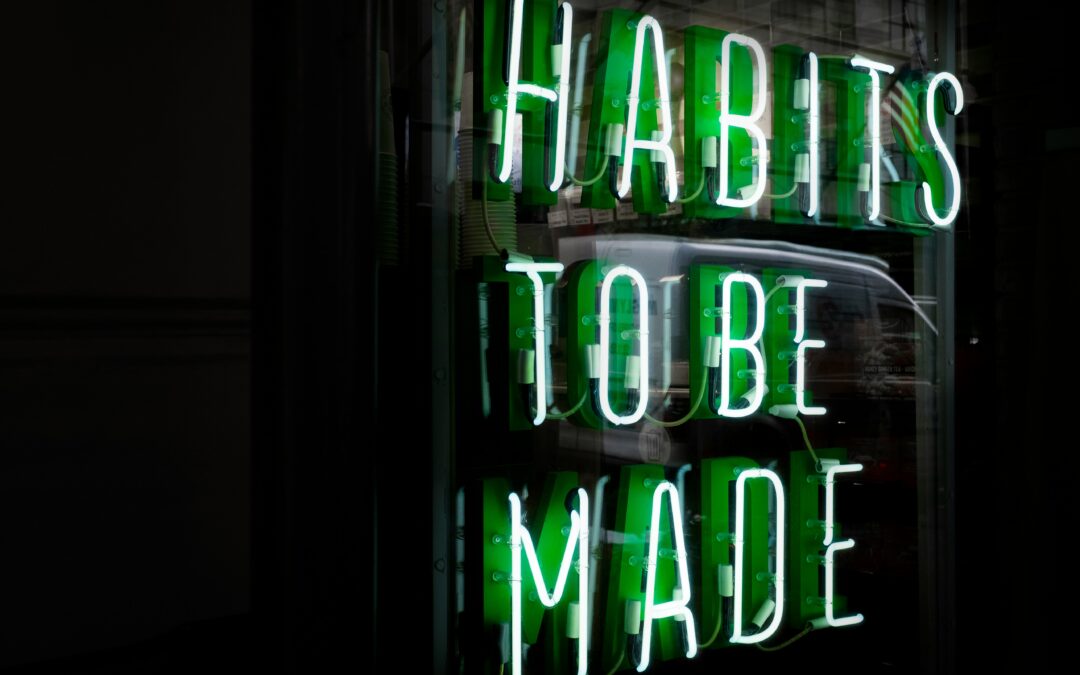Creating new habits—or breaking old habits—can seem like a challenging task, but both are essential for optimizing your routine and increasing your productivity.
I was recently reminded how difficult it can be to form new habits or break old ones. Several months ago, the key to my truck broke and I could no longer attach it to my key ring. Afraid I would forget it somewhere or lose it if I carried it around in my pocket, I started leaving it in my truck.
The dealership wanted over $200 to make a new key so I’ve been leaving the key in my truck for several months now. Last weekend, I finally found a place to make a new key for much less and my key is safely back on my key ring.
But every time I get in my truck now, I still set my key ring in the cupholder and reach for the key that’s no longer kept there. It’s been almost a week and I’m still reverting to the old habits of not having the key on my key ring.
The habit was formed and now breaking it is proving more difficult than I imagined.
This begs the question: why are habits so important?
The Importance of Habits
Habits are your subconscious mind doing something it has been trained to do through repetition and reinforcement. It’s an automatic behavior and does not require any thought to act out of habit.
Because habits happen subconsciously, they don’t take up any mental bandwidth. You can be thinking about something else and still brush your teeth.
Once a habit is established, it’s easier to sustain. That’s great if the habit is healthy or productive, but not such a good thing if you’re trying to break a bad habit.
I remember as a kid my mom told me cracking my knuckles was a bad habit. I tried to stop but I didn’t even know I was doing it. I finally figured there were a lot worse habits I could have. (Now I find it funny that my chiropractor cracks my knuckles every time I go).
How to Create New Habits
It’s important to know how habits form if you want to create new habits. Habits form because of repetition—by doing the same thing the same way every time.
One way to form a new habit is to incorporate it into a routine. Routines differ from habits in many ways, but the biggest difference is you have to think about routines.
Use this to your advantage when starting a new habit. If you want to practice yoga every morning before work, make it part of your morning routine. Be intentional about doing it every morning as soon as you wake up. Over time, you won’t have to think about it anymore. Your brain will be on autopilot.
Another tip for creating new habits is to start small. Don’t try to do 60 minutes of yoga at first. Start with 10 or 15 minutes. As it becomes more natural for you, increase your time to 30 minutes, 45 and finally 60 minutes.
Using a Habit Tracker to Create New Habits
Another useful tool for starting a new habit is a habit tracker. Whether digital or on paper, it gives your brain a hit of dopamine when you accomplish your habit and check it off. This “reward” for your brain helps reinforce this as something you want to keep doing.
I’ve built a habit tracker into my Sunday Strategy weekly planning ritual. You can use it to keep track of the habits you want to reinforce for the coming week and check them off each day when you complete them.
You can find a weekly Sunday Strategy in every Wholistic Productivity Planner or get the Sunday Strategy worksheet and guide for free when you sign up for my weekly newsletter.
How to Break Bad Habits
It’s not enough to create new habits if you still have bad habits. Breaking habits can be hard, but it is possible. Here are some tips on how to do it.
Most habits are triggered by time, place, or emotion. For example, we might snack late at night or when we feel upset or anxious. Maybe a certain place holds memories for us that are too much to handle.
Recognizing your triggers can help you identify the poor behavior so you can create a plan. Breaking bad habits requires you to be aware so your subconscious can’t take over and do its thing.
Because habits are often born from routines, one effective strategy is to change your routine. If you come home from work every night and doom-scroll Instagram for two hours, move your workout time to the evenings. Running or working out will keep you from wasting time on your phone.
A new routine lets you be intentional about what you want to replace your bad habit with. It’s a great opportunity to work in elements that align with your values, vision, and goals to accomplish the things that matter most to you.
Don’t let your habits stand in the way of your dreams. You can learn more about habits and how they relate to routine when you check out Episode 9 of the Wholistic Productivity Podcast.

